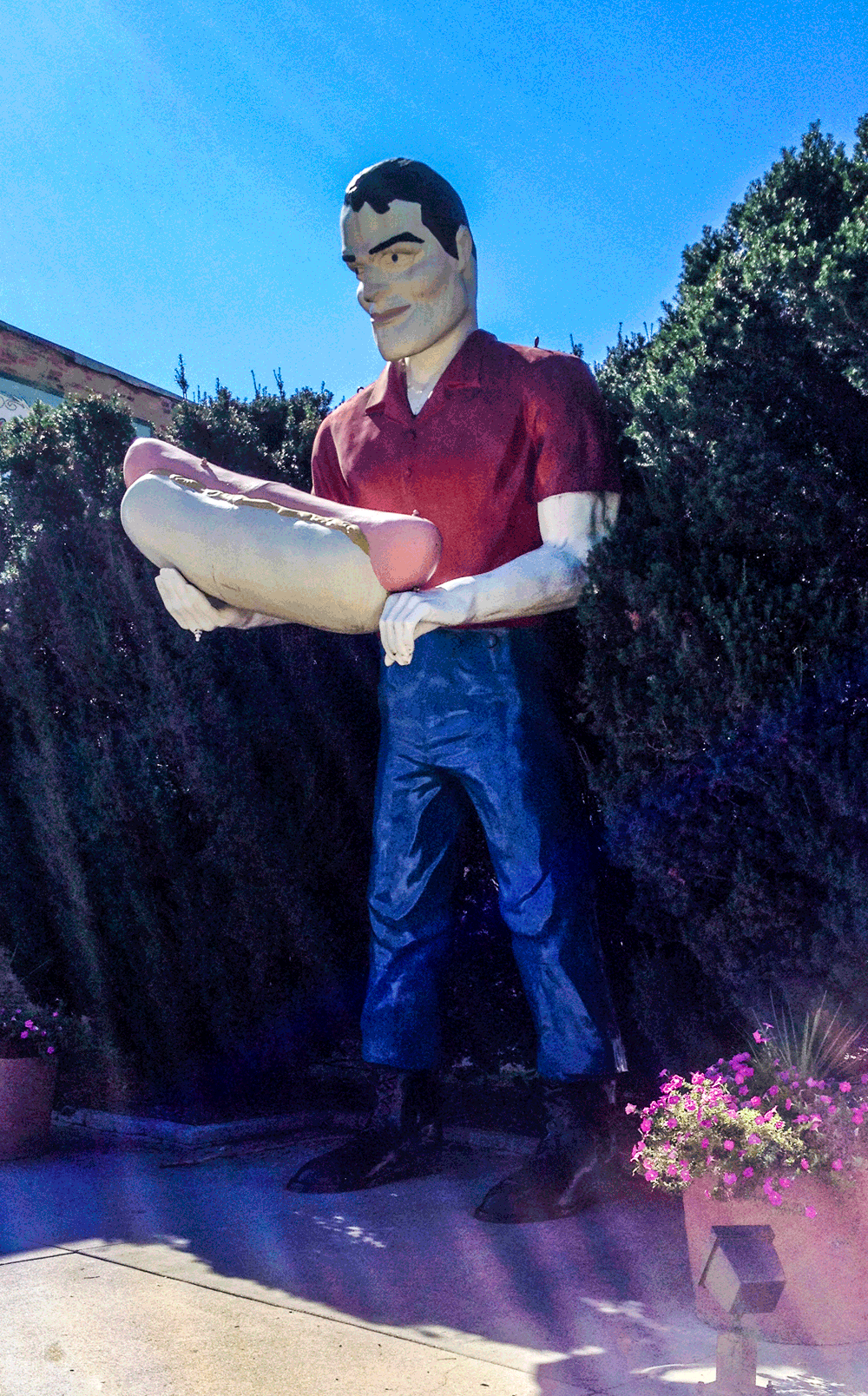
14 Oct Muffler Man, Atlanta Illinois
This Muffler Man is a must see as you pass through the tiny town of Atlanta, Illinois. He originally came from Cicero, and now boasts a giant hot dog in his arms. God bless those committed to preserving these icons of American marketing creativity!
If you don’t know much about Muffler Men, they are a truly fascinating part of our American roadside history. I’ve learned a bit about them through online research, this from Wikipedia:
“Boatbuilder Steve Dashew established International Fiberglass in 1963 by purchasing and renaming Bob Prewitt’s workshop, Prewitt Fiberglass. The first of the figures, a Paul Bunyan holding an oversized axe to promote a restaurant, was created by Bob Prewitt in 1962 for the Paul Bunyan Café on Route 66 in Flagstaff, Arizona.[4]
As the fibreglass moulds for this initial figure existed when Dashew acquired the company, similar characters could be readily created by keeping the same basic characteristics (such as the right palm up, left palm down position in which the original Bunyan lumberjack figure held his axe) with minor variation. Various fibreglass molds allowed different heads, limbs or torsos to be substituted to create multiple variant characters. Some promoted food, others automotive products. A fifteen-foot Amish man standing over a diner in Lancaster County, Pennsylvania and a Uniroyal gal in a skirt or bikini were among the many variants.
Thousands of the oversize figures would be deployed in a little over a decade at a typical cost of $1000-$2800 each. Some would be customized as promotions of individual roadside businesses on the US Highway system. Many were created to advertise franchise and chain brands, such as the Enco and Humble tigers and the Philips Petroleum cowboys. A novelty fibreglass dinosaur figure was most often seen promoting Sinclair Oil stations, but also appeared at various miniature golf courses.
When businesses closed or were sold, the figures would be repainted and adapted to represent different characters or were relocated. The statues have become natives, Vikings, football players and sports mascots, country bumpkins, cooks and chefs, cowboys, soldiers, sea pirates and astronauts.The use of roadside novelties represented a means for independent businesses to differentiate themselves in an era before two-lane highways were bypassed by freeways; businesses located directly on the main road would rely heavily on neon signage, promotional displays and gimmicks to make themselves more visible to passing motorists.
Increases in costs to deliver the lightweight but oversized figures proved problematic and business declined with the 1973 oil crisis. International Fibreglass was sold and closed permanently in 1976. The moulds for the figures, originally worth thousands of dollars each, were not retained and are now lost.”
And I wrote this blog a number of years ago praising these roadside giants as well.



No Comments